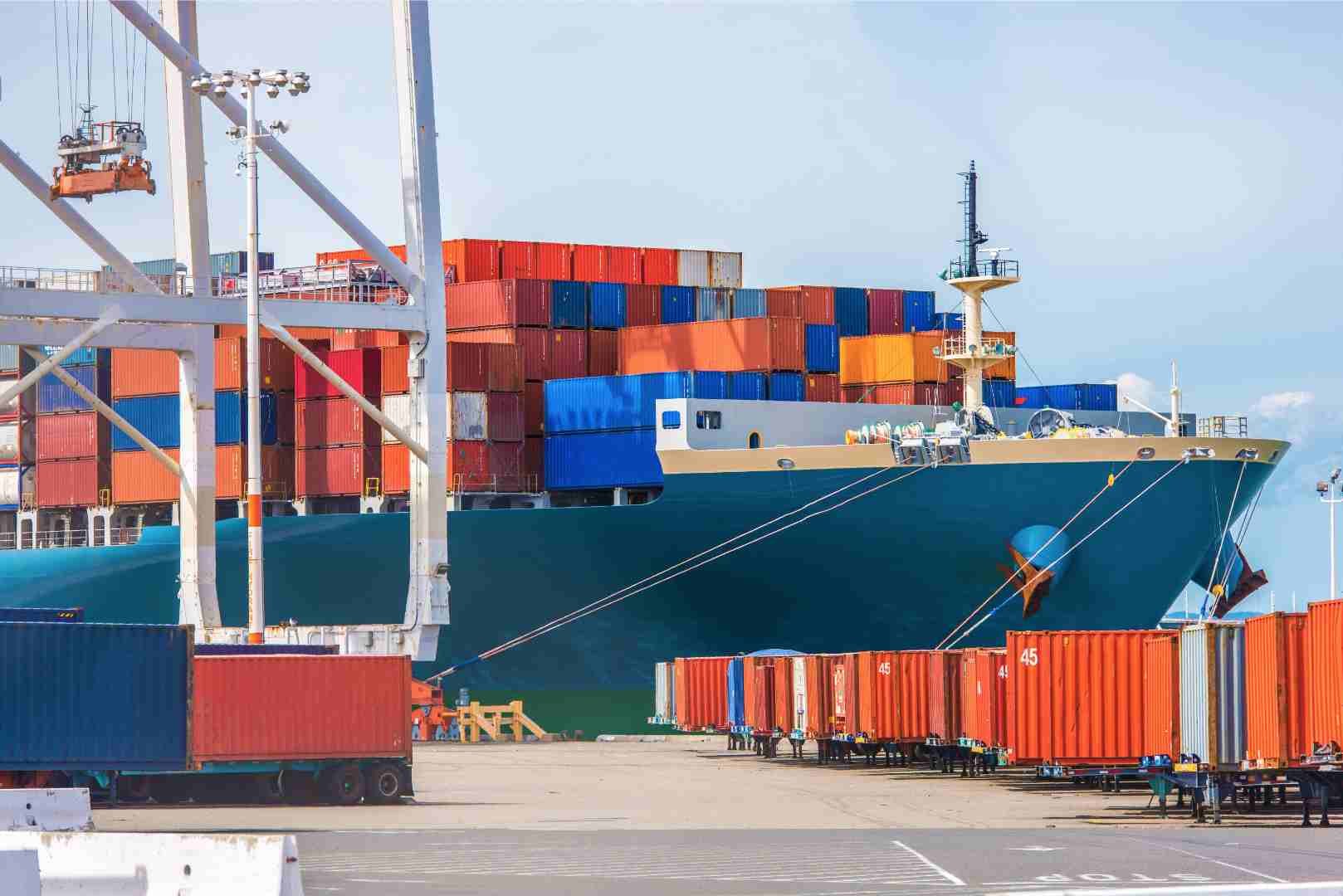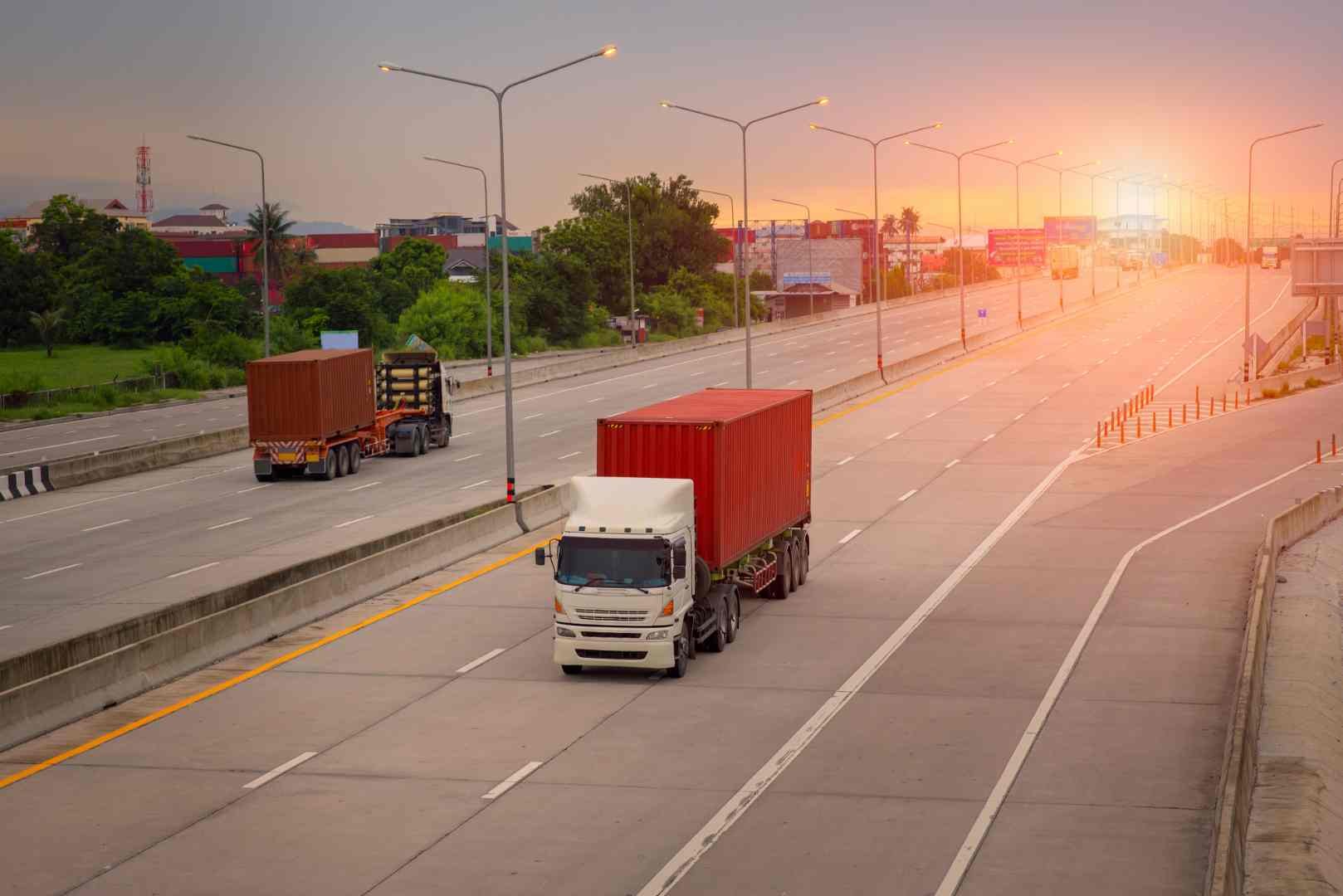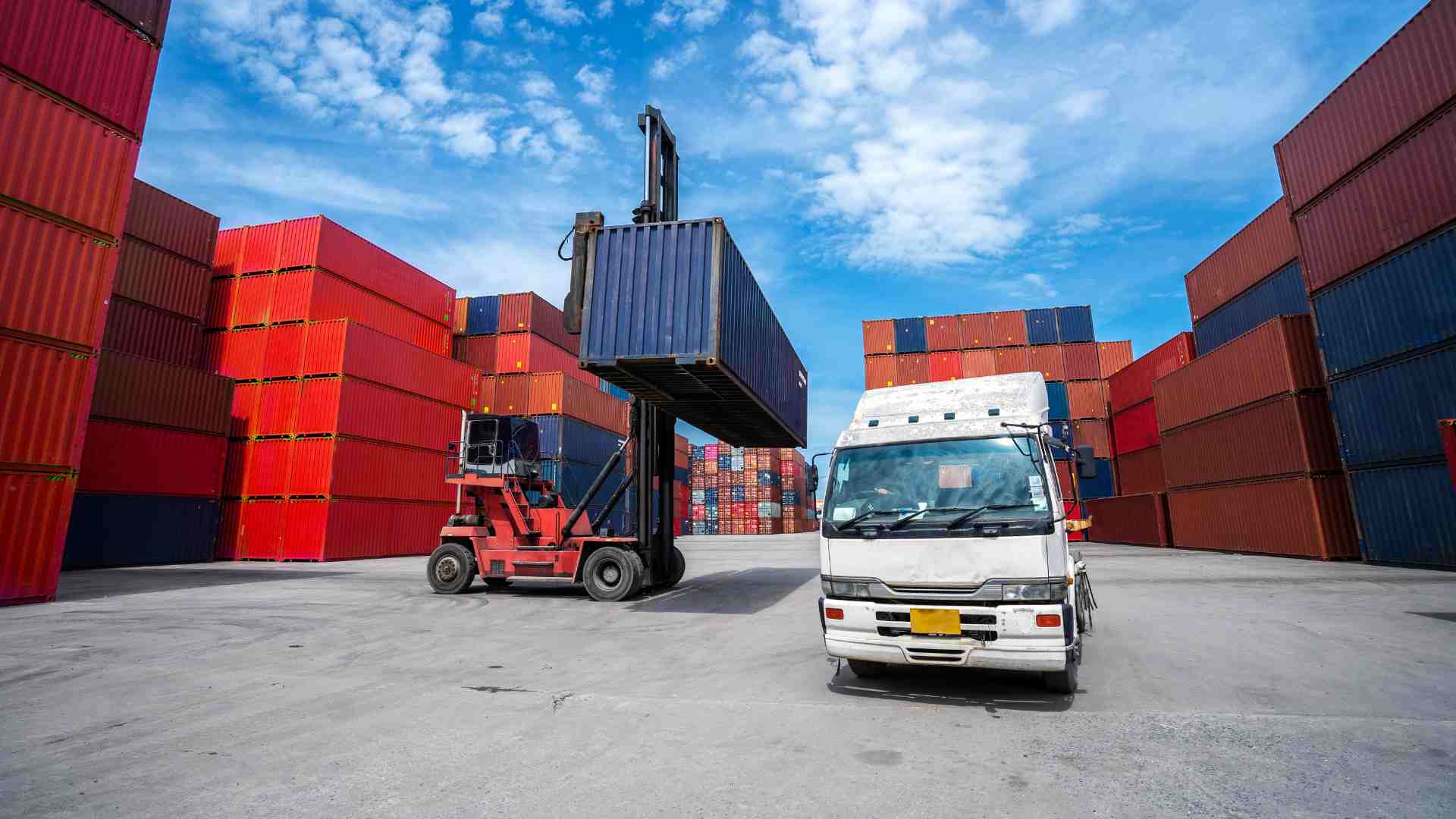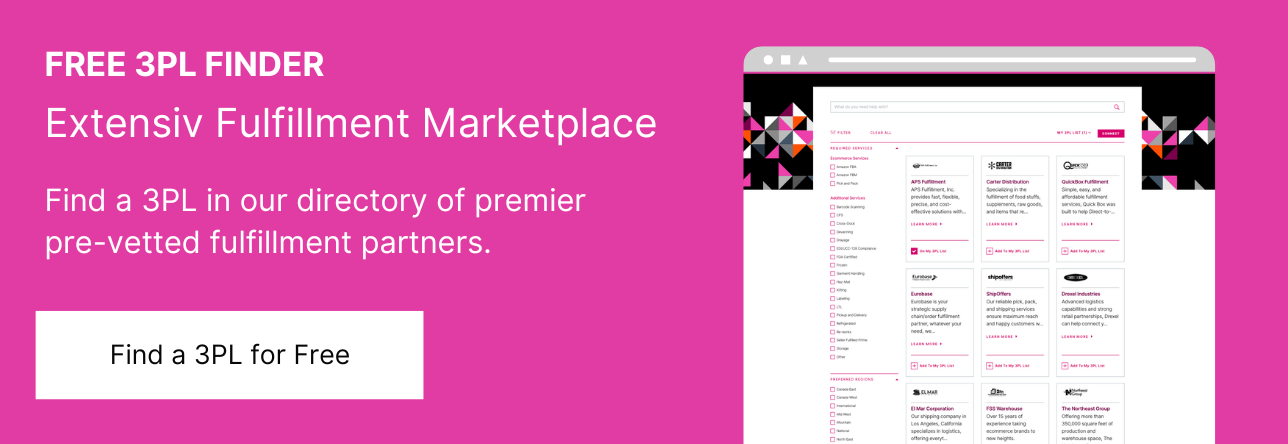Efficient transportation services are the backbone of successful logistics operations, and while the final mile gets most of the attention, drayage plays a critical role in ensuring a seamless supply chain. As ecommerce businesses increasingly rely on intermodal transportation to move goods, understanding the intricacies of drayage services and selecting the right drayage company become essential. In this guide, we will explore the world of drayage, its importance in modern logistics, and the top drayage companies that can help you optimize your transportation needs.
If you're a merchant or ecommerce brand seeking a third-party logistics (3PL) fulfillment partner with expertise in drayage, you've come to the right place. We will also discuss how Extensiv can assist you in navigating the complexities of drayage and other fulfillment challenges. So let's dive in and discover everything you need to know about drayage services and companies.
What is a drayage company?
Contrasted with long-haul transportation companies, a drayage company specializes in the short-distance transportation of goods, particularly shipping containers, between various transportation hubs within the supply chain. These hubs can include ocean ports, rail yards, and warehouses. Container drayage is an integral part of intermodal transportation, which involves the use of multiple modes of transport—such as over-the-road trucking, rail, and shipping—to move goods efficiently from their point of origin to their final destination.
The primary focus of a drayage company is to facilitate the pick-up, transport, and delivery of cargo between different transportation services, ensuring a smooth and timely transition between truckload, intermodal, and warehousing stages. Drayage carriers, also known as motor carriers or dray operators, work with freight forwarders, shippers, and other logistics companies to coordinate the transfer of goods and ensure their safe arrival at each stage of the journey.
In addition to providing a vital link within the supply chain, drayage companies often offer other services such as transloading, cartage, and door-to-door delivery. By working closely with their partners and staying in touch with real-time updates, drayage companies help businesses navigate the complexities of the shipping process, particularly in congested areas like Los Angeles, Long Beach, and other major port cities.
Overall, drayage companies play a crucial role in the trucking industry, offering specialized expertise and years of experience to ensure that goods are transported efficiently, safely, and on time.
The Drayage Process Explained
The drayage process is a vital aspect of intermodal transportation, connecting various modes of transport to ensure a smooth and efficient flow of goods throughout the supply chain. To better understand the role of drayage companies, let's delve into the five key steps involved in the drayage process:
- Cargo Arrival: The drayage process begins when shipping containers arrive at their initial transportation hub, such as sea ports or rail yards. At this stage, the containers are offloaded from the ship or train and stored temporarily in the facility.
- Container Pickup: The drayage carrier receives a pick-up order from the shipper or freight forwarder, providing all necessary details such as container number, location, and the final destination. The carrier dispatches the drayage trucker, equipped with a flatbed chassis or tri-axle to accommodate the container, arrives at the facility to collect the cargo.
- Cargo Inspection: Before leaving the facility, the drayage driver may need to perform a series of inspections, including checks for container damage, proper documentation, and adherence to hazmat regulations, if applicable.
- Transportation: The drayage carrier transports the container from the initial hub to the next stage in the supply chain. This could involve delivering the container to another transportation mode (e.g., rail ramps for intermodal transportation) or directly to a warehouse or distribution center.
- Unloading and Return: Once the container reaches its final destination, it is unloaded, and the empty container is returned to the drayage carrier. The carrier then returns the empty container to the ocean port, rail yard, or designated facility, completing the drayage process.
Throughout the drayage process, real-time updates and communication between shippers, logistics companies, and drayage carriers are essential to ensure that goods are transported efficiently and on schedule. While drayage typically covers short distances, its impact on the overall success of the supply chain cannot be underestimated. By effectively connecting different modes of transport and minimizing delays, drayage companies play a crucial role in keeping the global logistics industry moving.
Types of Drayage
 Drayage services can be categorized into several types, each tailored to meet the unique needs of different stages within the supply chain. Understanding these types will help businesses select the most appropriate drayage service for their specific requirements.
Drayage services can be categorized into several types, each tailored to meet the unique needs of different stages within the supply chain. Understanding these types will help businesses select the most appropriate drayage service for their specific requirements.
- Pier drayage: This type of drayage involves the transportation of cargo between an ocean port and a nearby facility, such as a warehouse, distribution center, or rail yard. Pier drayage is often the first step in the drayage process after goods arrive at a port from international manufacture.
- Inter- and intra-carrier drayage: Inter-carrier drayage refers to the transfer of cargo between two different carriers, such as from a trucking company to a rail carrier. In contrast, intra-carrier drayage involves the movement of cargo within the same carrier's network, such as between two terminals operated by the same trucking company.
- Intermodal drayage: This type of drayage focuses on the transportation of goods between various modes of transport, such as from a rail yard to a trucking terminal. Intermodal drayage is essential for ensuring seamless connectivity within the supply chain.
- Shuttle drayage: In cases where storage capacity at a port or rail yard is limited, shuttle drayage may be used to transport containers to an off-site storage facility until they are ready for pickup and delivery.
- Door-to-door drayage: As the name suggests, door-to-door drayage involves the pickup of cargo from the shipper's facility and its direct delivery to the consignee's location, bypassing intermediary transportation hubs.
By understanding the various types of drayage services available, businesses can choose the most suitable option for their specific needs, ensuring the efficient and timely movement of goods throughout the supply chain.
What to Look for in Drayage Companies
 Selecting the right drayage company is crucial for ensuring the efficient and timely transportation of goods. Here are some factors to consider when choosing a drayage service provider:
Selecting the right drayage company is crucial for ensuring the efficient and timely transportation of goods. Here are some factors to consider when choosing a drayage service provider:
- Time, Mileage, and Weight: Drayage costs are typically calculated based on the distance covered, the time required for transportation, and the weight of the cargo. It's essential to understand these factors when comparing drayage companies and their pricing.
- Tolls and Fees: In some cases, drayage carriers may need to pay tolls or other fees during transportation. It's important to clarify whether these additional costs are included in the overall drayage pricing or billed separately.
- Chassis Split Fees: Drayage carriers may charge a fee for splitting a container between two different chassis during transportation. Be sure to inquire about any chassis split fees and their impact on the overall cost of drayage services.
- Pre-pull Costs: In some cases, drayage carriers may need to pre-pull containers from ports or rail yards before the scheduled pickup time. This can result in additional costs that should be taken into account when comparing drayage providers
- Detention Fees: Detention fees may be charged by drayage carriers if a truck is delayed beyond the agreed-upon time at a port, rail yard, or warehouse. Be aware of any potential detention fees and their impact on the total drayage cost.
- Reviews and Reputation: Investigate the reputation of potential drayage carriers by checking online reviews, seeking referrals from other businesses, or consulting with industry organizations such as the Intermodal Association of North America.
- Range of Services: Consider the range of services offered by the drayage company, including any additional options such as transloading, cartage, or door-to-door services. A provider with a comprehensive range of services may be better equipped to meet your specific needs.
By carefully considering these factors, businesses can make an informed decision when selecting a drayage company, ensuring the efficient and cost-effective transportation of goods throughout the supply chain.
Top 4 Drayage Service Providers
When looking for a drayage company, it's important to consider factors such as location, range of services, and experience. Here are four top drayage service providers that partner with Extensiv to ensure efficient and reliable transportation of goods.
El Mar Corporation

- Locations: California
- Ecommerce Services: Pick and Pack
- Additional Services: Drayage, Devanning, Labeling, Kitting, EDI/UCC-128 Compliance, Storage, Cross-Dock, Garment Handling, Re-works, Barcode Scanning
- Total Fulfillment Centers: 1
- Founded: 1966
- Extensiv Partner Since: 2015
El Mar Corporation is a California-based drayage company with a strong track record since its founding in 1966. They offer a range of services, including pick and pack, drayage, devanning, labeling, kitting, and more.
Mitco

- Locations: Washington, California
- Ecommerce Services: Pick and Pack
- Additional Services: Drayage, Devanning, Labeling, Kitting, EDI/UCC-128 Compliance, Storage, Cross-Dock, Garment Handling, Pickup and Delivery, Re-works, Barcode Scanning, LTL
- Total Fulfillment Centers: 6
- Founded: 1988
- Extensiv Partner Since: 2012
Mitco operates in Washington and California, offering a comprehensive suite of services such as pick and pack, drayage, devanning, labeling, kitting, and LTL. With six fulfillment centers, Mitco provides extensive coverage and flexibility for businesses in need of drayage services.
Royal Distribution

- Locations: California, New Jersey
- Ecommerce Services: Pick and Pack
- Additional Services: Drayage, Devanning, Labeling, Kitting, Storage, Cross-Dock, Re-works, Barcode Scanning
- Total Fulfillment Centers: 2
- Founded: 2004
- Extensiv Partner Since: 2016
Royal Distribution operates in both California and New Jersey, providing drayage services alongside their pick and pack offering. They also offer additional services such as devanning, labeling, kitting, storage, and cross-docking.
Sweetwater Logistics

- Locations: North Carolina
- Ecommerce Services: Pick and Pack, Amazon FBM, Amazon FBA
- Additional Services: Drayage, Devanning, Labeling, Kitting, Seller Fulfilled Prime, EDI/UCC-128 Compliance, Storage, Cross-Dock, Garment Handling, Re-works, Barcode Scanning
- Total Fulfillment Centers: 1
- Founded: 2009
- Extensiv Partner Since: 2010
Based in North Carolina, Sweetwater Logistics offers a range of ecommerce services, including pick and pack, Amazon FBM, and Amazon FBA. Their additional services include drayage, devanning, labeling, kitting, Seller Fulfilled Prime, and more.
By partnering with one of these top-rated drayage service providers, businesses can ensure a seamless, efficient, and cost-effective transportation process for their goods.
How Extensiv Helps with Drayage and Other Fulfillment Challenges
Choosing a 3PL partner through the Extensiv Fulfillment Marketplace offers numerous benefits for merchants and ecommerce brands, streamlining the process of finding the perfect fulfillment partner. Here are some key advantages of going with an Extensiv 3PL partner:
- Curated List of Trusted 3PLs: Extensiv's Fulfillment Marketplace has a curated list of high-performing 3PLs across all service verticals in the United States, Canada, and strategic international locations. This ensures that you are selecting from a pool of trusted and reliable partners.
- Efficient Discovery Experience: The marketplace offers an intuitive discovery experience using search and filtering options, allowing merchants to find 3PLs based on precise criteria such as preferred regions, ecommerce services, and additional services. This makes the process of finding and evaluating a 3PL partner much easier and more efficient.
- One-to-Many System: Extensiv's Fulfillment Marketplace allows brands to enter information once and receive bids from multiple prequalified 3PLs. This simplifies the process of finding and evaluating the specialized capabilities of a trusted 3PL that meets the brand's specific requirements.
- Transparent Pricing and Services: Extensiv's marketplace offers transparency into the services provided by 3PLs and straightforward pricing. This allows ecommerce merchants to make informed decisions when selecting a 3PL partner.
- Free, Qualified Lead Generation for 3PLs: The Extensiv Fulfillment Marketplace is a game-changer for scalable fulfillment services. It enables 3PLs to improve their acquisition effectiveness through free, qualified lead generation. This ensures that the 3PLs on the platform are motivated to provide excellent service to ecommerce merchants.
- Seamless Integration with Extensiv Order Management: By partnering with a 3PL through Extensiv's Fulfillment Marketplace, merchants can maintain a comfortable level of visibility and control, route orders, and replenish stock automatically, regardless of how many warehouse locations or partners they have. This integration between your Extensiv order management platform and the 3PL’s warehouse management system (WMS) allows for increased efficiency in inventory holding locations and reduced manual fulfillment tasks.
By opting for an Extensiv 3PL partner, ecommerce merchants can enjoy a streamlined process of finding the right fulfillment partner, enabling them to focus on growing their business while ensuring efficient and reliable logistics services.
-
You’ll read about:
Be the first to know
Subscribe to our newsletter







